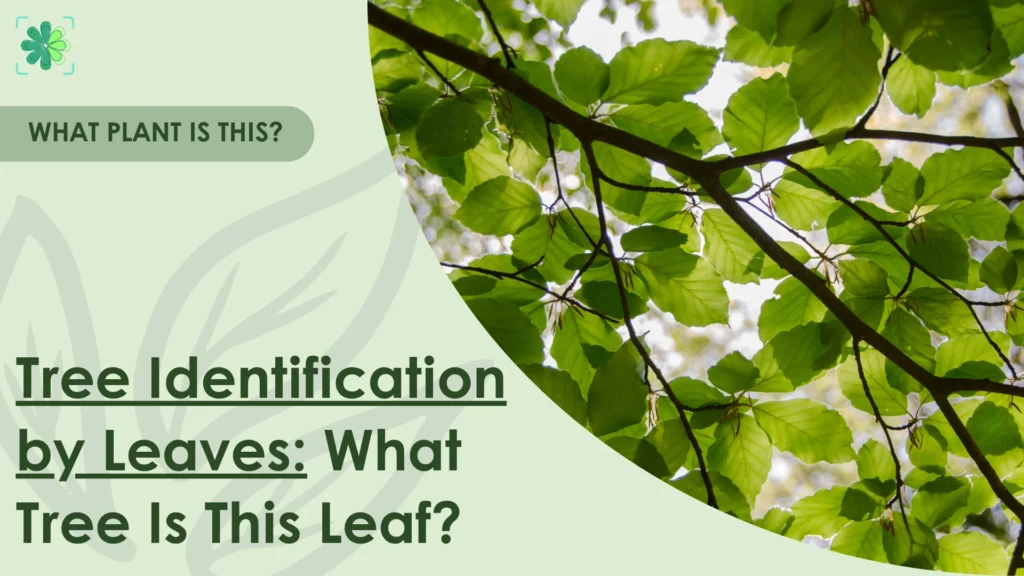
If you’ve ever wondered what tree a leaf came from, this guide is for you. Tree identification by leaves starts with noticing small details (leaf shape, edge type, and how they grow). We’ll cover why these clues matter, show real-life examples, and help you avoid common mistakes that can throw you off. Let’s dive in!
Why Leaves Are the Tree’s Identity Card
Leaves are like a tree’s visible DNA. Just as every person has unique fingerprints, every tree has leaf traits that help you tell one species from another. They’re often more helpful for ID than flowers or fruit, simply because they’re easier to find and observe. Here’s why tree identification by leaves works so well:
- Leaves are available most of the year – unlike flowers or fruit that only appear seasonally.
- Each species has a consistent leaf pattern – shape, edge, and vein layout rarely change.
- You can access them easily – no need to dig, climb, or wait for a bloom.
- There are over 60 recognized leaf shapes – and each one links to certain tree families.
In short, if you learn how to read the details in a single leaf, you can often identify the entire tree. No special tools needed. That’s why this method is so popular among both beginners and experts.
5 Key Features for Tree Identification by Leaves
When trying to identify a tree, its leaves can tell you a lot if you know what to look for. These five features are the foundation of accurate tree identification by leaves. Let’s break them down one by one.
Leaf Shape (the first thing your eyes notice)
Shape is often the easiest feature to spot and one of the most important in tree identification by leaf shape. Trees tend to produce leaves that stay consistent within their species, so noticing shape can instantly rule certain trees in or out. Some common shapes include:
- Heart-shaped: Leaves that are broad at the base and taper to a point at the tip, often with a small notch at the stem.
- Pinnately lobed: These leaves have deep or shallow lobes arranged along both sides of a central vein, somewhat resembling a feather.
- Ovate (egg-shaped): A classic, balanced form where the leaf is wider at the base and gently tapers toward the tip, like a vertical egg.
- Kidney-shaped: Rounded with a smooth curve and a slight inward dip at the base. The overall shape looks like a kidney bean.
- Round: Circular or nearly circular leaves, often with a symmetrical appearance and even margins.
Each of these shapes gives you a starting point. Once you get familiar with them, recognizing trees becomes much easier, especially when combined with other clues.
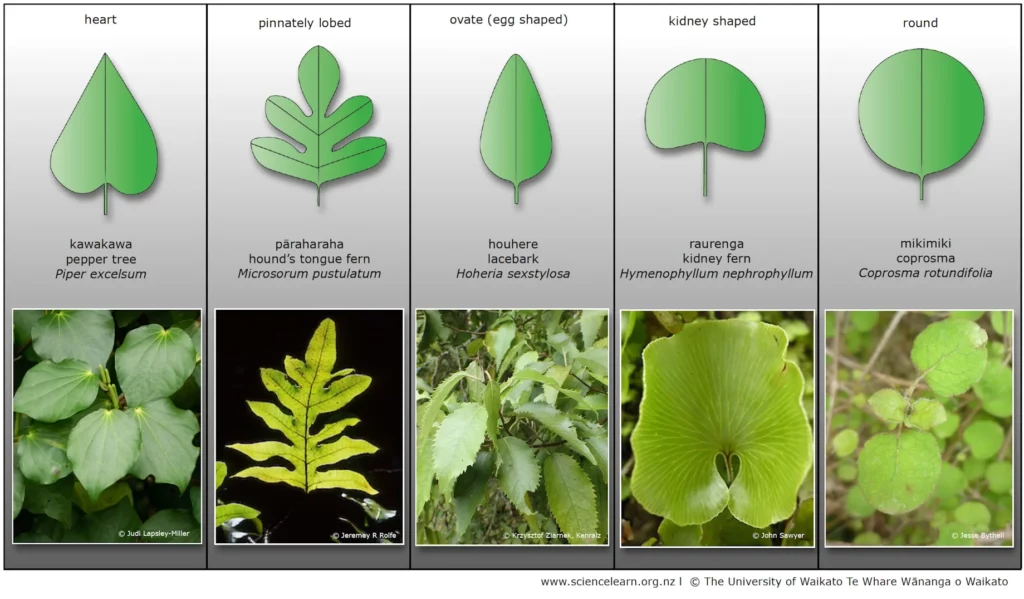
Leaf Arrangement (how leaves grow on the branch)
Next, look at how the leaves are spaced out on the twig. This detail might seem small, but it’s surprisingly powerful in leaf tree identification. There are three basic patterns:
- Alternate: Each leaf grows on a different side of the stem in a zigzag pattern. Birch, elm, and oak trees often follow this pattern.
- Opposite: Leaves grow in pairs, directly across from each other. You’ll see this in trees like maple and dogwood.
- Whorled: Three or more leaves grow in a circle around the same point on the stem. While less common, this trait can instantly narrow down your options when you find it.
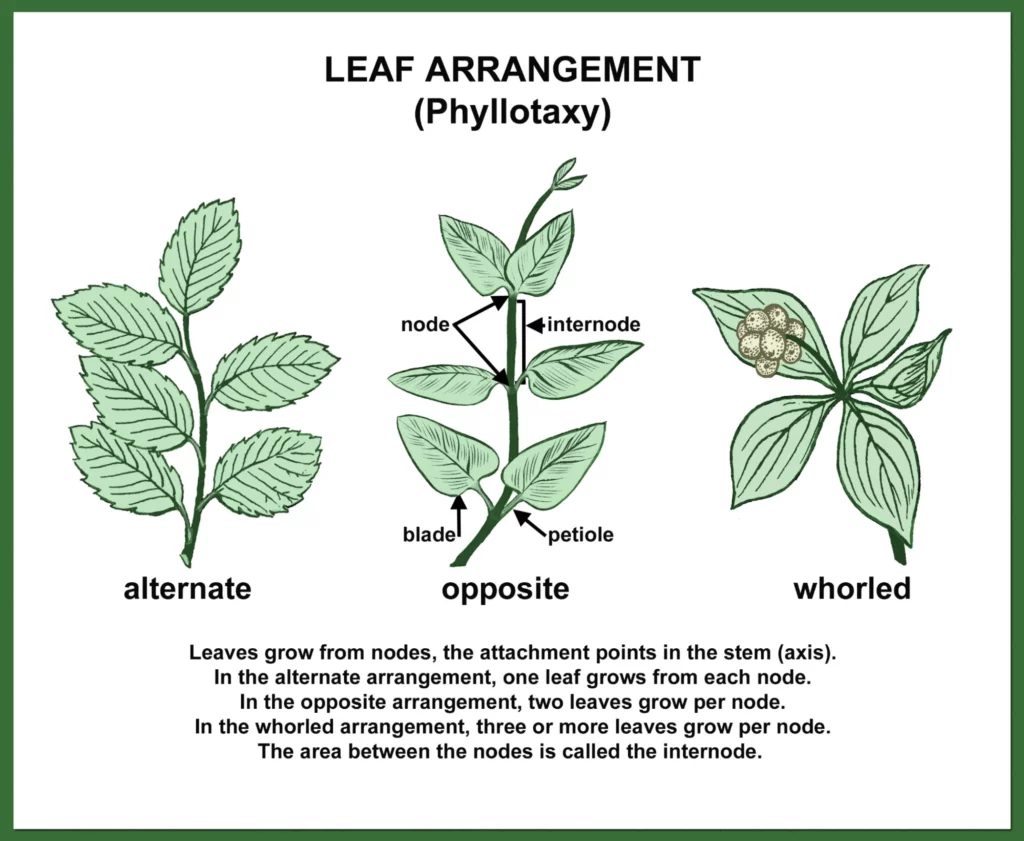
Vein Structure (the leaf’s internal map)
Veins aren’t just decorative. They give structure to the leaf and offer solid clues for ID. This is a key element in tree identification by leaf shape, especially for trees with similar outlines. The two main patterns to know:
- Pinnate (feather-like): A single central vein runs down the center, with smaller veins branching off. This pattern is typical in trees like cherry, beech, and elm.
- Palmate (hand-like): Several veins fan out from a central point, much like fingers from a palm. You’ll see this in maple, sycamore, and sweetgum leaves.
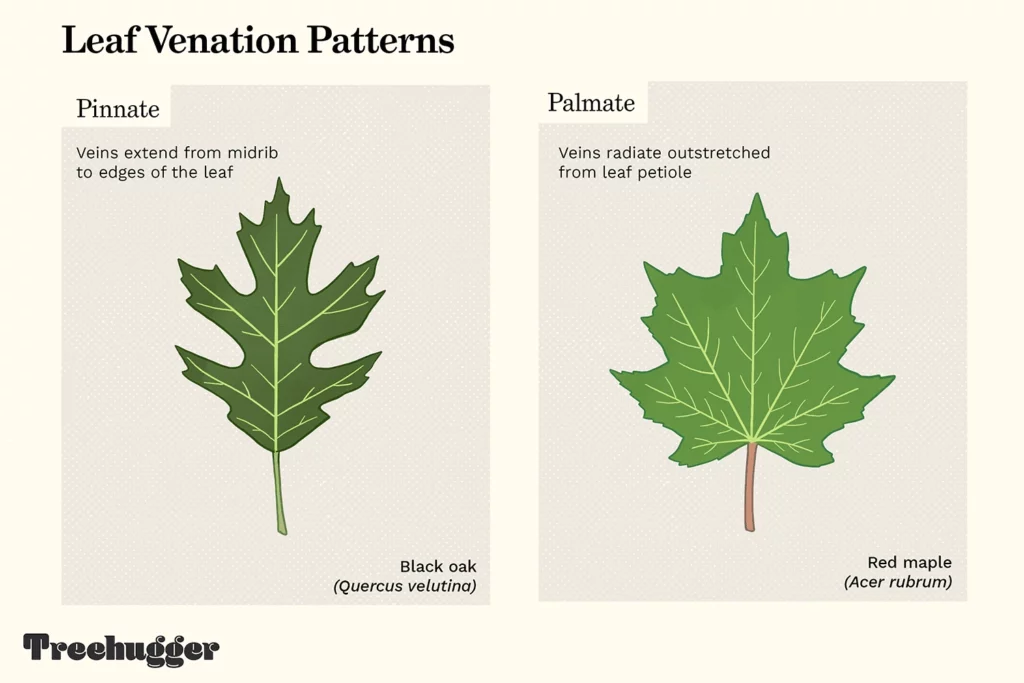
Image Source: Treehugger
Leaf Margins (what the edges tell you)
Edges might seem like small details, but they carry significant clues. Just like handwriting styles, different tree species “write” their leaf edges in unique ways. Here’s what to look for:
- Entire: The leaf edge is entirely smooth, with no teeth or notches, creating a clean, uninterrupted outline.
- Toothed: The edge is lined with minor, sharp-looking points that resemble tiny saw teeth, giving the leaf a textured look.
- Lobed: The leaf has rounded or pointed projections separated by shallow indentations, creating distinct but connected “sections.”
- Parted: Similar to lobed leaves, but with deeper cuts that reach closer to the midrib, making each segment look more separated while still being part of a single leaf.
Run your finger gently along the edge of the leaf or zoom in with your phone camera. This feature often helps confirm what you’re seeing.
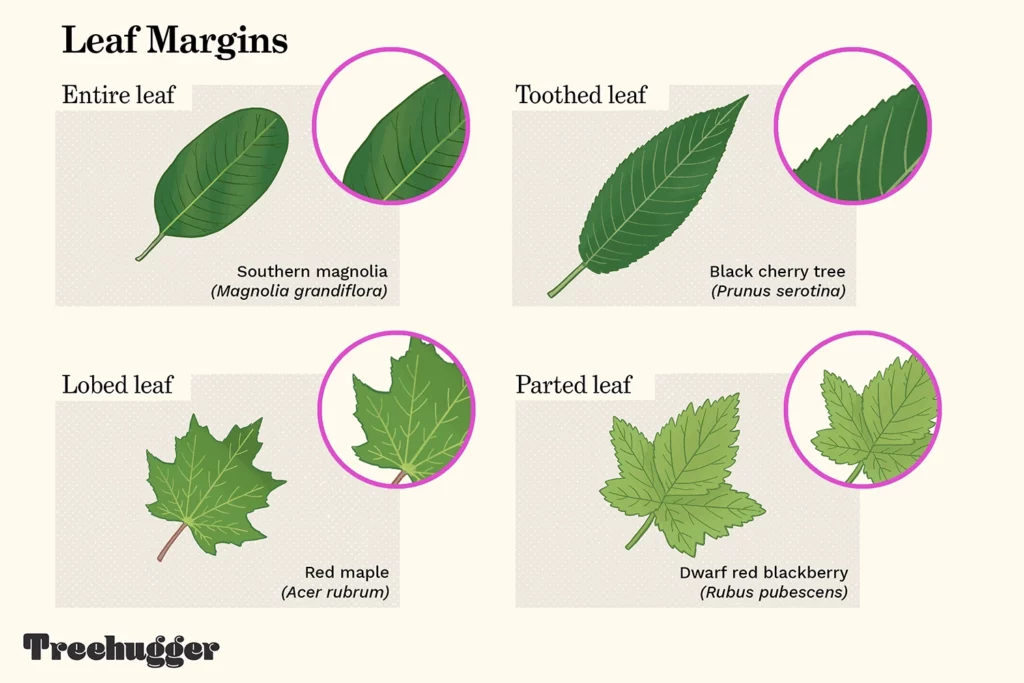
Image Source: Treehugger
Texture, Color, and Leaf Surface (the final check)
Lastly, turn your attention to the surface of the leaf. Sometimes, the top and bottom look completely different. This is normal and worth noticing. Here’s what to pay attention to:
- Texture: Is it smooth, waxy, velvety, or hairy? For example, magnolia leaves are thick and glossy on top, while silver poplar has fuzzy undersides.
- Shine: Some leaves are dull and matte, others reflect light like polish. Glossy leaves often suggest evergreens or tropical types.
- Color: Most are green, but the exact shade can vary. Some have a bluish tone, silvery sheen, or even purplish veins.
These small clues are great for final confirmation, especially when comparing species that look similar in shape.
Visual Clues from Real Trees with Examples
Sometimes, the fastest way to identify a tree is to trust your eyes. Specific leaf shapes, textures, and patterns stand out immediately, and once you’ve seen them a few times, they become visual shortcuts. This section highlights a few classic “leaf clues” from real trees that you’re likely to spot in everyday life. Use them as anchors for your tree identification by leaves.
Clue 1: Lobed Leaves with Sharp Teeth → Think Maple
If the leaf has deep lobes that look like fingers and sharp, saw-like edges, you’re probably looking at a maple. The veins spread out from a central point in a palm-like pattern. This shape is so iconic that it’s even on national flags.
- Visual cue: Large leaf, 3–5 bold lobes, toothed margins
- Helpful tip: Look for opposite leaf arrangement and palmate veins
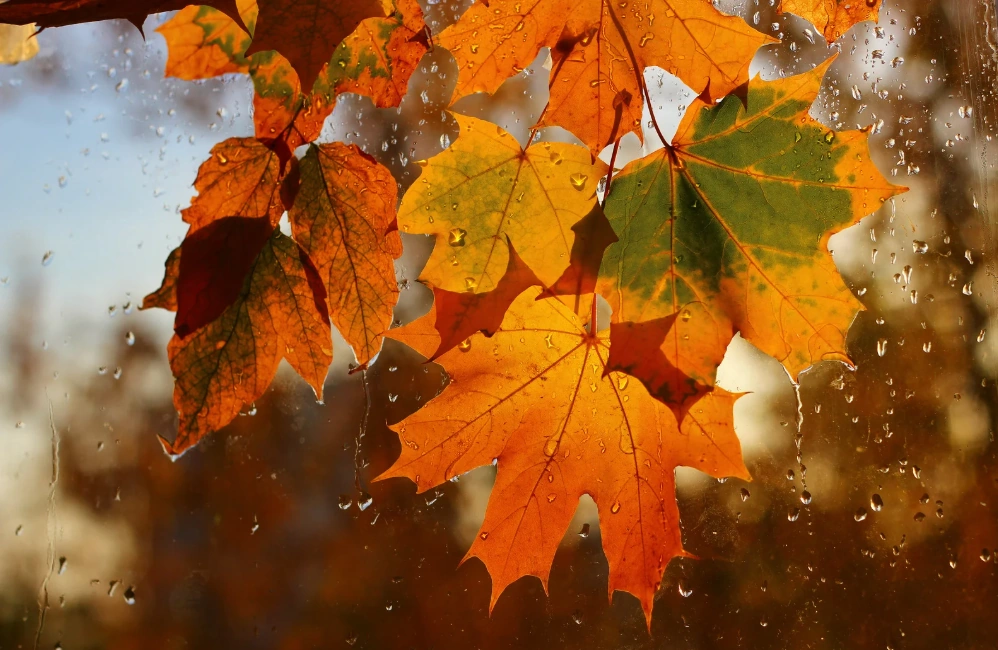
Clue 2: Oval Leaves with Fine Serrations → Likely an Apple Tree
When the leaf is oval, with a pointed tip and tiny teeth around the edges, it may belong to an apple tree. The texture is often leathery, and the veins run in a neat, feather-like pattern.
- Visual cue: Oval shape, fine tooth edges, slightly glossy surface
- Helpful tip: Check for an alternate arrangement along the twig
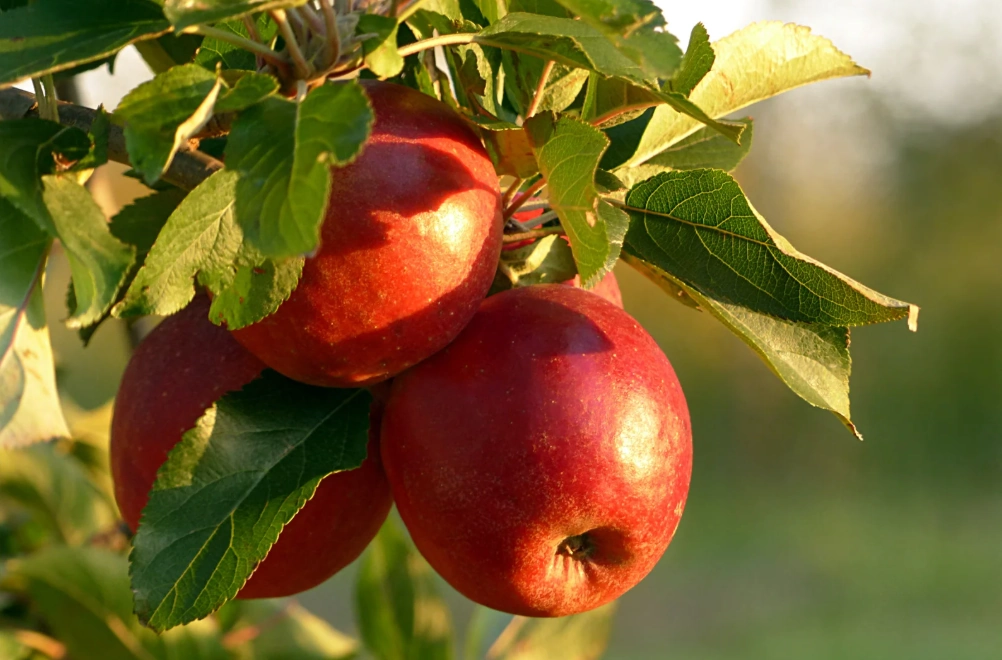
Clue 3: Needles in Bundles → You’re Seeing a Pine
If it doesn’t look like a leaf at all, just thin green needles grouped in twos or fives, you’re looking at a conifer, most likely pine. These “leaves” are long, flexible, and smooth-edged, perfect for cold or dry climates.
- Visual cue: Long, slender needles grouped together
- Helpful tip: Count how many needles per cluster. It helps ID the species
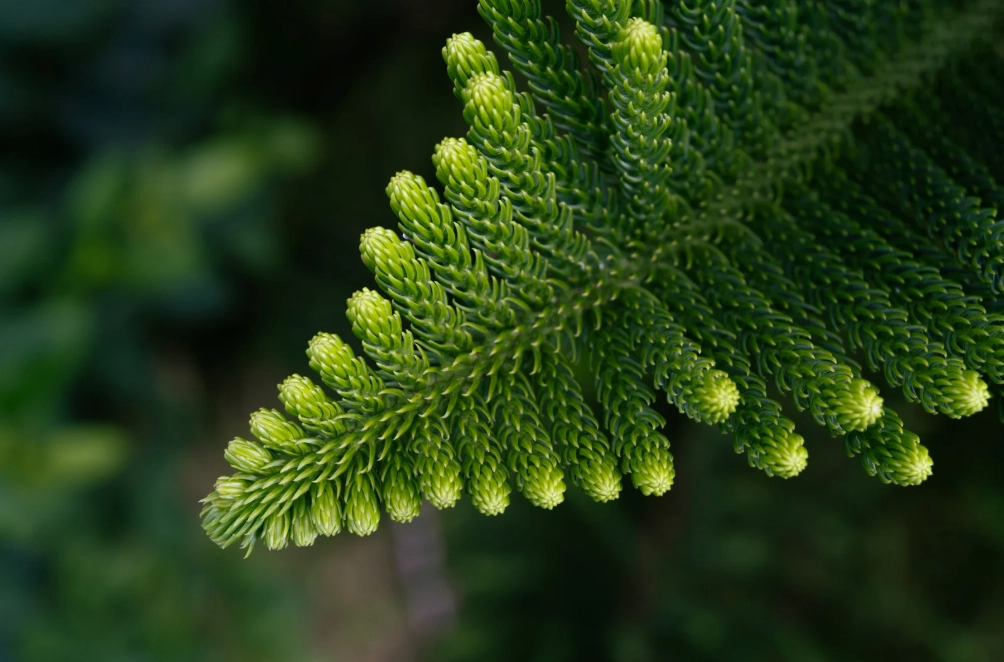
Clue 4: Oval Leaves with Uneven Base and Double Teeth → Think Elm
This one’s tricky. If you notice a leaf that’s oval, slightly rough, and has a base that looks lopsided, with small teeth along larger teeth, you might be holding an elm leaf.
- Visual cue: Uneven base, double-serrated edge, strong midrib
- Helpful tip: Veins are very straight and parallel, running to each tooth
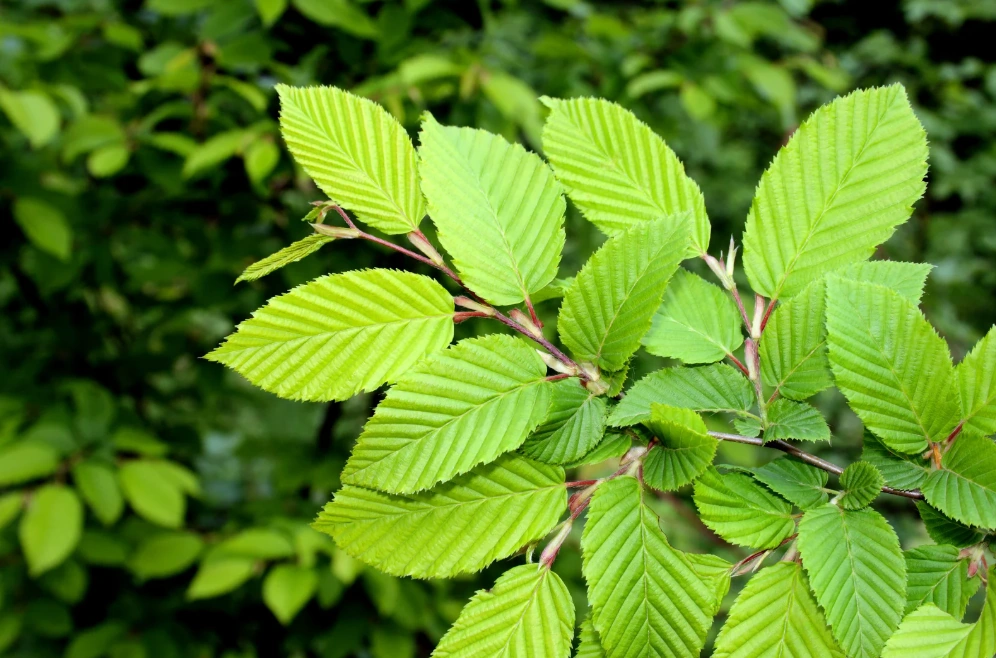
Clue 5: Rounded or Heart-Shaped Leaves → Could Be a Native or Ornamental Tree
Some trees have simple, rounded leaves with smooth curves or heart-like shapes. These are often found on ornamental trees or native species. If the margin is smooth and the leaf feels soft or papery, look at the overall shape first.
- Visual cue: Soft curves, complete base, sometimes symmetrical
- Helpful tip: Use shape + margin + vein combo to narrow it down
Common Mistakes to Avoid when Identifying a Tree by Leaves
Even with the right tools and a sharp eye, it’s easy to misidentify a tree, especially if you overlook key details or rely too much on guesswork. Below is a list of common mistakes beginners often make, along with simple ways to avoid them.
| Mistake | How to Avoid It |
| Focusing only on leaf shape | Always check multiple features: margin, vein pattern, arrangement, and texture. |
| Ignoring how the leaves are arranged on the branch | Look at whether leaves are opposite, alternate, or whorled. It narrows options fast. |
| Over-relying on Google image searches | Use trusted sources or plant ID apps that match based on structure, not just looks. |
| Forgetting seasonal changes (e.g., autumn color) | Check leaf shape and margins instead of relying on color, which can vary by season. |
| Comparing damaged or immature leaves | Choose a healthy, full-sized leaf to get accurate shape and edge details. |
| Confusing compound leaves with a cluster of separate leaves | Trace the leaf back to the stem. Compound leaves share one stalk. |
| Ignoring the underside of the leaf | Sometimes the texture, color, or vein visibility is clearer underneath. |
Conclusion
Hope this detailed guide will help you spot patterns and recognize trees faster through tree identification by leaves. Once you learn to read the signs, even a single leaf can tell you a lot. And when in doubt, just open Planteyes and snap a photo.
FAQs
How can I identify a tree by its leaves?
Start by looking at the leaf’s shape, margin (edge), vein pattern, and how it’s arranged on the branch. These small details can narrow down the species quickly. Use tools like the Planteyes app if you’re not sure.
What’s the difference between lobed, toothed, and entire leaves?
Lobed leaves have deep sections or “fingers,” toothed leaves have small, sharp edges like a saw, and entire leaves have smooth, unbroken outlines. These edge types are key for tree identification by leaves.
Is there an app that can help identify trees by their leaves?
Yes! The Planteyes app is designed to help you identify trees quickly using leaf photos. It analyzes shape, margin, and other patterns to give you accurate results in seconds.
How do I know if a leaf is from a compound or a simple leaf tree?
Look at the stem. If multiple leaflets are attached to a single stalk (called a rachis), it’s a compound leaf. If it’s just one blade per stalk, it’s a simple leaf. This difference is crucial for accurate tree identification by leaves.


